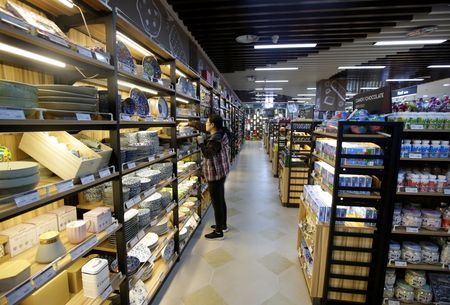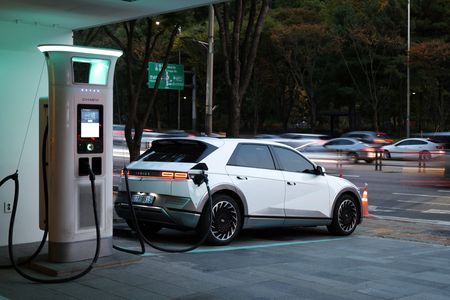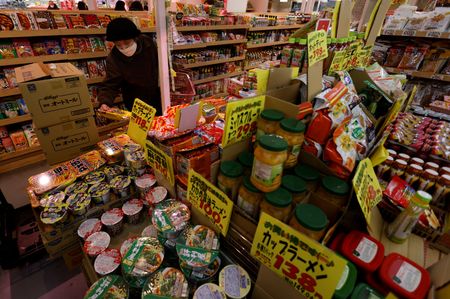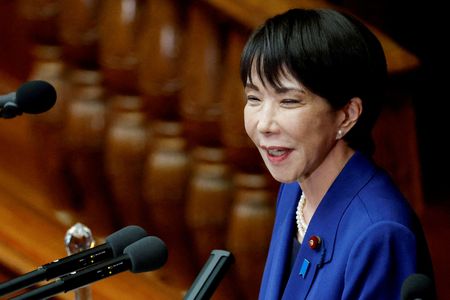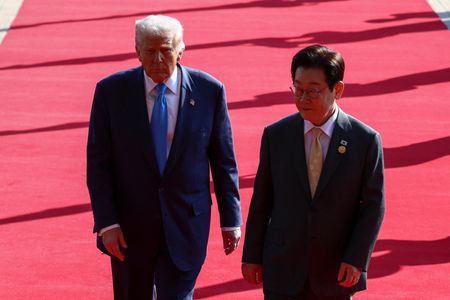SEOUL (Reuters) -Here are some of the details released on Friday by the U.S. and South Korea on a trade deal.
The two countries released a joint fact sheet on the summit meeting last month between U.S. President Donald Trump and South Korean President Lee Jae Myung.
TRADE
Washington and Seoul agreed to set tariffs on U.S. imports of Korean autos and auto parts at 15%, down from 25%, putting them on par with their Japanese competitors.
The effective date on auto tariffs will be retroactive to November 1 after the agreement is finalised and once a bill on the $350 billion investment package is submitted to Parliament, Seoul has said.
U.S. imports of wood products and pharmaceuticals from South Korea will face tariffs no greater than 15%, while aircraft parts and generic drugs will be tariff-free.
On semiconductors, the U.S. will provide terms for South Korea that are “no less favourable than terms that may be offered in a future agreement covering a volume of semiconductor trade at least as large as South Korea’s.”
This means semiconductor tariffs would be no less favourable than those for key competitor Taiwan, South Korea’s top presidential policy adviser said on Friday.
The two countries agreed to work together on addressing non-tariff barriers in South Korea’s agricultural and digital services sectors, including market access for U.S. meat, online platform regulations and cross-border transfers of location data.
Government-controlled Korea Gas also signed an agreement to buy about 3.3 million metric tons of U.S. liquefied natural gas a year in long-term agreements, the White House said earlier.
INVESTMENT
The two countries said that as part of the $350 billion investment fund, South Korea would pay $200 billion in cash in phased installments that would be capped at $20 billion a year in an effort to maintain won stability.
South Korea said it would work to source the U.S. dollars via means other than market purchases to minimise potential impacts on the domestic currency market.
South Korea could seek an “adjustment in the amount and timing of the funding, and the United States will, in good faith, give due consideration to such request,” the fact sheet said.
The remaining $150 billion would be earmarked for shipbuilding cooperation, which would include loans and guarantees from policy institutions for ship financing as well as private-sector investments by South Korean companies, Seoul has said.
RAISING FUNDS
South Korea has said the two sides agreed to split profits evenly before the initial investments are recouped, adding that they would only pursue commercially viable projects.
It plans to use operating income from the country’s foreign assets, including accrued interest and dividends.
The country will not need to sell government-backed bonds in the local market but is likely to raise funds from offshore markets.
(Reporting by Cynthia Kim, Joyce Lee, Jack Kim, Jihoon Lee and Ju-min Park; Editing by Ed Davies)






